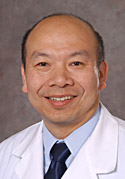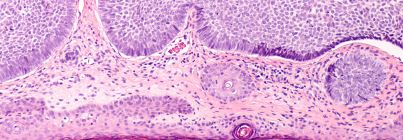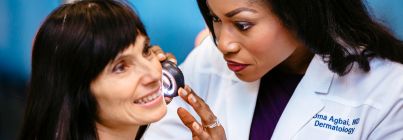Min Zhao, M.D., Ph.D.
 Brief introduction
Brief introduction
Dr. Min Zhao, is internationally known for the discovery that the endogenous electric signal fields direct cell migration and that growth to heal wounds is one of the most important guidance cues. He has discovered that PI3 kinase/Pten molecules are key elements in the electric signaling, the first couple of genes identified in electric signaling in cells (Nature 2006; 442, 457-460). He leads a group actively in pursuit of the understanding and the application of electric signaling in wound healing and regeneration (Physiol Review 2005; 85: 943-78). Prior to coming to UC-Davis, Dr. Zhao was a Professor of Regenerative Medicine at the School of Medical Science, Honorary Consultant with Department of Ophthalmology, University of Aberdeen, Scotland, UK.
Biography
Dr. Zhao graduated from the 3rd Military Medical University in Chongqing, China and completed one year clinical practice at the General Hospital in Beijing. He went on to complete his MSc and PhD in Trauma Surgery and Pathology at the Research Institute of Surgery under supervision of Professor Zhengguo WANG, academician and one of the founders of modern trauma surgery in China. He worked abroad as an honorary research fellow at University College London, England, UK, with Professor Geof Burnstock. He then moved to University of Aberdeen, Scotland, UK, where he was awarded a prestigious Wellcome Trust University Award Lecturer and Senior Lecturer in 1999 and 2002 respectively, and to full professor in 2004. Dr. Zhao holds/held honorary appointments as visiting professor, faculty member, and senior scientist with Johns Hopkins Medical School, UCSF, University of Toronto (Canada), Austrian Academy of Sciences (Vienna), The 3rd Military Medical University (China), and University of Aberdeen (UK).
Research Interests
Dr. Zhao’s group is interested in the control of directed cell motility and directed cell division. One particular interest is in the role played by small physiological electrical fields in wound healing, the development and regeneration of many tissues. He has been leading the group that attracted research funding of £2.7m (~ US $4.9 million) in the last eight years. He leads international collaborations to unravel the electrical control of cell migration and growth with Colin McCaig, John Forrester, Bing Song (University of Aberdeen), Josef Penninger (Austrian Academy of Sciences), Peter Devreotes (Johns Hopkins University Medical School), Henry Bourne (UCSF), Eammon Gaffney, Philip Manni (Oxford University), Robert Insall (Glasgow, Scotland), Kees Weijer (Dundee, Scotland), Yuesheng Huang and Jianxin Jiang (China).
Steady extracellular electrical fields are present at a wound. Our group has used multiple approaches to study electric field-directed migration and growth of nerve, blood vessels, epithelial cells, and immune cells. Dr. Zhao proposed and initiated the work using the social amoeba Dictyostelium discoideum and transgenic animals to study the genetic basis of the effects and mechanisms of physiological electrical field. We use at molecule, cellular, tissue and whole animal level. Our recent publications that provide an overview of our work: Nature 2006; 442, 457-460. Trends in Neurosciences 2002;25, 354-359; Physiological Reviews 2005; 85, 943-978.
Published online videos of electric field-directed cell migration and wound-healing.
Grant to study how cells detect electric fields
Directing migration of human stem cells with electric fields (California Institute for Regenerative Medicine - December 2009)
Electric field directed cell migration: http://www.jcb.org/cgi/content/full/jcb.200112070/DC1/5
Wound healing: http://www.fasebj.org/cgi/content/full/17/3/397/F4/DC1
The electric signal directed in monolayer wound healing: http://www.nature.com/nature/journal/v442/n7101/extref/nature04925-s2.mov
Impact of our research
Our work has led to recognition of the importance of physiological electrical fields in guiding cell growth, division and migration and in wound healing.
Our work has featured in national and international media, following are selected examples:
Discover Magazine - Top 100 Science Stories of 2006
Discover Magazine - The Top 12 Biology Stories of 2006
New England Journal of Medicine. January 18, 2007; 356:303-304. Wound Healing with Electric Potential. Huttenlocher, Rick Horwitz. http://content.nejm.org/cgi/content/extract/356/3/303
Nature Podcast 27 July 2006. http://www.nature.com/nature/podcast/v442/n7101/nature-2006-07-27.mp3
Healing power of electricity raises hope of new treatments. Ian Sample, science correspondent The Guardian July 27, 2006
Scottish scientists switch on to healing power of electricity The Scotsman 27 Jul 2006
Nature Chemical Biology (01 Sep 2006). Charging the batteries to heal wounds through PI3K
New Scientist podcast 28th July 2006. http://media.newscientist.com/data/av/podcast/newsci-20060728-easter-island-revisited.mp3
J Cell Biol, Volume 174, 4, 477-477. Electric healing. http://www.jcb.org/cgi/content/full/174/4/477
Our research has been featured in popular science magazine and TV programs in the UK, France, Germany, Denmark, China, Canada, Austria, Puerto Rico, Japan, Russia ….the British News papers: http://www.guardian.co.uk/science/2006/jul/27/uk.health as well as the prestigious American publication, Science Magazine.
Education
| Ph.D., Trauma Surgery, the Third Military Medical University, Chongqing, China | 1985-1991 |
| M.D., Medicine, the Third Military Medical University, Chongqing, China | 1980-1985 |
Academic Appointments
| Professor of Dermatology School of Medicine, University of California Davis, California |
Nov. 2007 –present |
| Honorary Professor School of Medical Sciences, University of Aberdeen, UK |
Nov. 2007-- Oct. 2012 |
| Professor/Chair in Regenerative Medicine School of Medical Sciences, University of Aberdeen, UK |
Oct. 2004 -- Oct. 2007 |
| Honorary Consultant NHS Grampian, Aberdeen Royal Infirmary |
Nov. 2005-- |
| Wellcome Trust University Award Senior Lecturer School of Medical Sciences, University of Aberdeen, UK |
Oct. 2002-- 2004 |
| Wellcome Trust University Award Lecturer School of Medical Sciences, University of Aberdeen, UK |
Oct. 1999-- 2002 |
| Research Fellow Marischal College, Physiology, University of Aberdeen, UK |
Nov.1994--Oct.1999 |
| Honorary Research Fellow University College London, Dept. Anatomy & Developmental Biology, London, UK |
Feb. 1994-Nov.1994 |
| Assistant Professor Research Institute of Surgery, Third Military Medical University, Chongqing, China |
Dec., 1991-Nov.,1992 |
| Associate Professor Research Institute of Surgery, Third Military Medical University, Chongqing, China |
1992-Dec.,1997 |
Other Academic and Professional Appointments
| Visiting Senior Scientist Institute of Molecular Biotechnology of the Austrian Academy of Sciences, Vienna, Austria |
Oct. – Nov. 2006 |
| Visiting Professor Johns Hopkins University Medical School, Depart. Cell Biology & Anatomy, Baltimore |
Nov.—Jan. 2005 |
| Visiting Faculty Member Johns Hopkins University Medical School, Depart. Cell Biology & Anatomy, Baltimore |
Nov.2004—present |
| Visiting Professor University of Toronto, Department of Biophysics & Immunology |
March--Jul. 2003 |
| Guest Professor Research Institute of Surgery, Third Military Medical University, Chongqing, China |
Feb., 2001-present |
| Visiting Professor University California, San Francisco, Depart Molecular & Cellular Pharmacology |
Oct.--Dec. 2001 |
| Visiting Professor Johns Hopkins University Medical School, Depart Biological Chemistry |
Aug.--Oct., 2000 |
Teaching experience
| Dermatology 420 Course (Medical Students. Classroom lecture) UC Davis | 2008- |
| Biophotonics Lectures (courses for undergraduates. Classroom lecture) UC Davis | 2008- |
| Applied Medical Principles (Medical Students. Classroom teaching) UC Davis | 2008- |
| Angiogenesis (Fourth year medical students. Classroom lecture) University of Aberdeen | 1999-2007 |
| Stem Cells (Fourth year medical students. Classroom lecture) University of Aberdeen | 1999-2007 |
| Stem Cells; wound healing (4th year medical students. Tutorial) University of Aberdeen | 1999-2007 |
Selected Publications (from total of 71)
1. Ou J, Walczysko P, Kucerova R, Rajnicek A, McCaig C, Zhao M, Collinson J. Chronic wound state exacerbated by oxidative stress in Pax6(+/-) aniridia-related keratopathy. J Pathol. 2008; 215(4):421-30.
2. Li Y, Shanley L, McCaig CD, Zhao M. Electric field directed neuronal migration. J Cell Physiol. 2008; 216:527-35.
3. Sun H, Song B, Dong H, Reid B, Player MA, Watson J, Zhao M. Visualization of fast moving cells in vivo using digital holographic video microscopy. J Biomedical Optics. 2008; 13(1): 014007.
4. Zhao Z, Walczysko P, Zhao M. Intracellular calcium store is essential for injury induced calcium signaling and re-endothelialization. J Cell Physiol. 2008; 214:595-603.
5. Zhao M. PTEN: a promising pharmacological target to enhance epithelial wound healing. Br J Pharmacol. 2007;152:1141-4.
6. Song B, Gu Y, Pu J, Reid B, Zhao Z, Zhao M. Application of direct current electric fields to cells and tissues in vitro and modulation of wound electric field in vivo. Nat Protoc. 2007;2:1479-89.
7. Reid B, Nuccitelli R, Zhao M. Non-invasive measurement of bioelectric currents with a vibrating probe. Nat Protoc. 2007;2 (3):661-9.
8. Pu J, McCaig CD, Cao L, Zhao Z, Segall JE, Zhao M. EGF receptor signaling is essential for electric-field-directed migration of breast cancer cells. J Cell Sci. 2007;120:3395-403.
9. Forrester JV, Lois N, Zhao M, McCaig C. The spark of life: the role of electric fields in regulating cell behaviour using the eye as a model system. Ophthalmic Res. 2007;39(1):4-16.
10. Zhao M, Song B, Pu J, Wada T, Reid B, Tai G, Wang F, Guo A, Walczysko P, Gu Y, Sasaki T, Suzuki A, Forrester JV, Bourne HR, Devreotes PN, McCaig CD, Penninger JM. Electrical signals control wound healing via PI3Kg and PTEN signaling. Nature, 2006. 442, 457-460.
11. Shanley L, Walczysko P, Bain M, McEvan D, Zhao M. Influx of extracellular Ca2+ is necessary for electrotaxis in Dictyostelium. J Cell Sci. 2006, 119(Pt 22):4741-8.
12. Pullar C, Zhao M, Pu J, Reid B, Song B, McCaig C, Isseroff RR. b-adrenergic receptor agonists delay while antagonists accelerate epithelial wound healing: Evidence of an endogenous adrenergic network within the corneal epithelium. J Cell Physiol. 2007;211(1):261-72.
13. McCaig CD, Rajnicek AM, Song B, Zhao, M. Controlling cell behavior electrically: current views and future potential for an old concept. Physiol Review 2005; 85: 943-78.
14. Leiper LJ, Walczysko P, Kucerova R, Ou J, Shanley LJ, Lawson D, Forrester JV, McCaig CD, Zhao M, Collinson JM. The roles of calcium signaling and ERK1/2 phosphorylation in a Pax6+/- mouse model of epithelial wound-healing delay. BMC Biology 2006, 4:27.
15. Pu J, Zhao M. Golgi polarization in a strong electric field. J Cell Sci. 2005; 118:1117-1128. (Journal Cover image)
16. Wang E, Reid B, Lois N, Forrester JV, McCaig C, Zhao M. Electrical inhibition of lens epithelial cell proliferation – An additional factor in secondary cataract? FASEB J. 2005; 19: 842-4.
17. Reid B, Song B, McCaig CD, Zhao M. Wound healing in rat cornea: the role of electric currents. FASEB J. 2005; 19: 379-386. (featured on the Cover)
18. Song B, Zhao M, Forrester JV, McCaig CD. Nerves are guided and nerve sprouting is stimulated by an endogenous electrical field in vivo. J Cell Sci. 2004; 117:4681-90. (Journal cover image and Featured Inside this Issue)
19. Bai H, McCaig CD, Forrester JV, Zhao M. DC electric fields induce distinct preangiogenic responses in microvascular and macrovascular cells. Arterioscler Thromb Vasc Biol 2004; 24: 1234-1239.
20. Shanley L, McCaig CD, Forrester JV, Zhao M. Insulin, not leptin, promotes cell migration to heal monolayer wounds in human corneal epithelium via PI3 kinase and MAP kinase dependent pathways. Invest Ophthalmol Vis Sci. 2004; 45: 1088-94. (Featured on Inside this Issue)
21. Zhao M, Bai H, Wang E, Forrester JV, McCaig CD. Electrical stimulation directly induces pre-angiogenic responses in vascular endothelial cells by signaling through VEGF receptors. J Cell Sci. 2004; 117: 397-405. (Featured on the Journal Cover & Inside this Issue)
22. Zhao M, Song B, Pu J, Forrester JV, McCaig CD. Direct visualization of stratified epithelium reveals that wounds heal by unified sliding of cell sheets. FASEB J. 2003;17(3):397-406.


